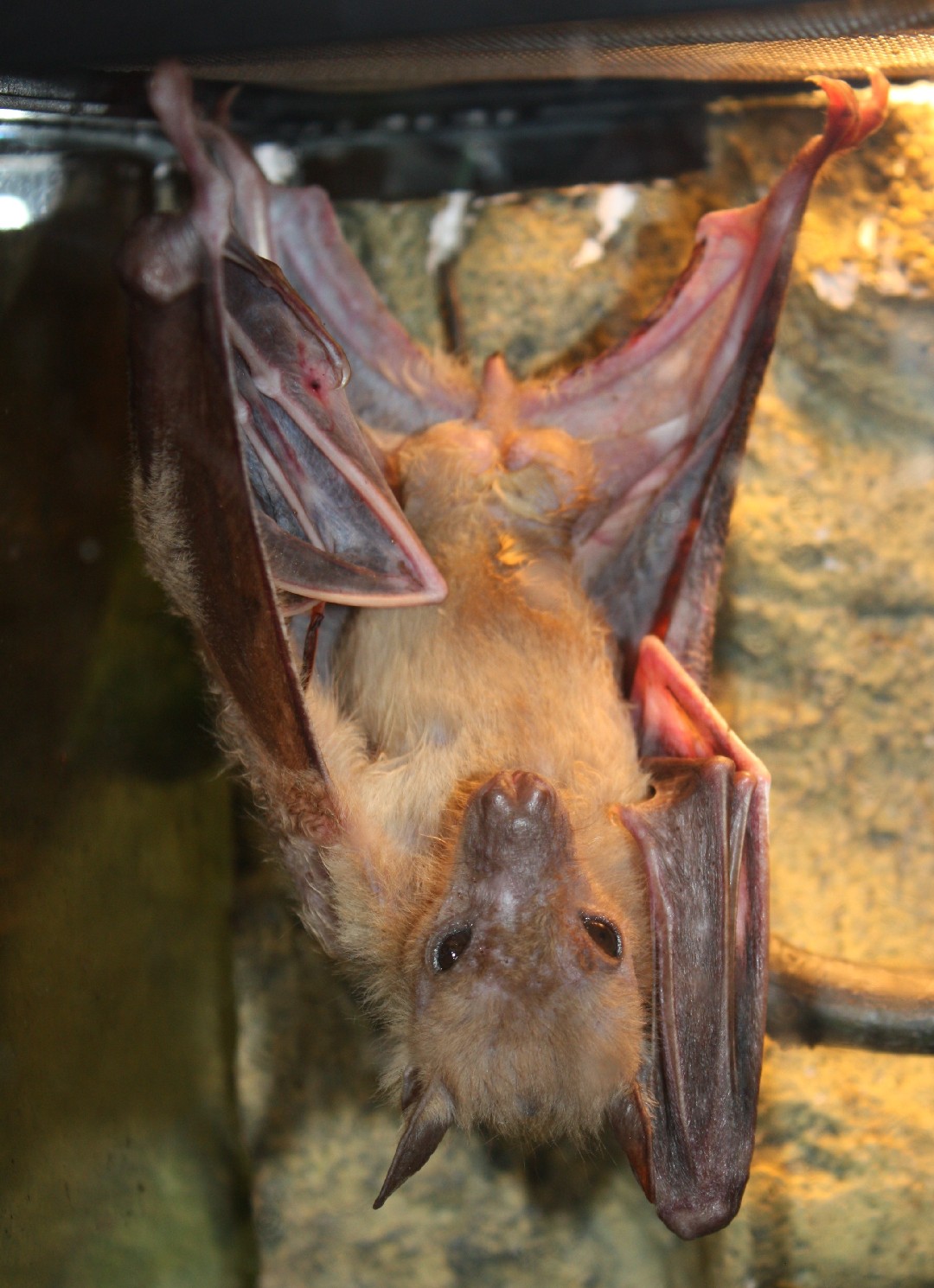Indian flying fox
A species of Fruit bats Scientific name : Pteropus giganteus Genus : Fruit bats
Indian flying fox, A species of Fruit bats
Scientific name: Pteropus giganteus
Genus: Fruit bats
Content
Description People often ask General Info
 Photo By J. Patrick Fischer , used under CC-BY-SA-3.0 /Cropped and compressed from original
Photo By J. Patrick Fischer , used under CC-BY-SA-3.0 /Cropped and compressed from original Description
The Indian flying fox is India's largest bat, and one of the largest bats in the world, weighing up to 1.6 kg (3.5 lb). Its body mass ranges from 0.6–1.6 kg (1.3–3.5 lb), and males are generally larger than females. The wingspan ranges from 1.2–1.5 m (3 ft 11 in–4 ft 11 in) and body length averages 15.5–22.0 cm (6.1–8.7 in). The wings rise from the side of the dorsum and from the back of the second toe, and its thumb has a powerful claw. It has claws on only its first two digits of its wings, with the thumb possessing the more powerful claw, and all five digits of its leg. It lacks a tail. The Indian flying fox ranges in color, with a black back that is lightly streaked with grey, a pale, yellow-brown mantle, a brown head, and dark, brownish underparts. It has large eyes, simple ears, and no facial ornamentation—a typical appearance for a species of the genus Pteropus. The skull is oval-shaped and the greatest length of the skull is 71–75.6 mm (2.80–2.98 in). The orbital rim of the skull is incomplete. The ears lack a tragus or antitragus and are ringed, and the ears range in length from 35–40 mm (1.4–1.6 in) in length. The dental formula is 3.1.4.22.1.4.3. The first upper premolar is absent, the canine is pronounced, and the molars have a longitudinal furrow. As of 1999, it is the longest-lived member of its genus; one individual lived for 31 years and 5 months in captivity. 
People often ask
General Info
Lifespan
31.4 years
Diet
Indian flying fox primarily indulges in a diet of soft, ripe fruits, particularly figs and dates. It also incorporates flowers, nectar, and small insects, using its keen senses to locate these morsels in the wild.
Appearance
The indian flying fox is a large bat with a wingspan reaching 1.5 meters. Its body is covered in a dense coat of brown-black fur, lighter on the underparts. It possesses a foxlike face with large, forward-looking eyes and smaller, rounded ears. A significant distinction is visible between sexes, females being smaller and slightly lighter in fur color than males. Juveniles resemble adults but display less sexual dimorphism until maturity.
Behavior
The Indian flying fox roosts communally in the treetops of large trees in camps often with thousands of bats. Roosts tend to be used for upwards of ten years, and are usually inhabited year-round rather than seasonally. Within the roost the bats quarrel and chatter often, and during sunny hours of the day bats fan their wings and call, and during cloudy periods bats are silent and wrap their wings around their body. Occasionally a few bats fly around the roost during the day, but most activity is restricted to night, when they leave the roost one by one 20–30 minutes after the sunset. Bats at the top of the roost tend to circle the roost and leave before the rest of the colony emerges. The time of bat emergence was significantly influenced by the day length, sunset and the ambient temperature delayed the time of emergence. The bats fly with the appearance of a large swarm but forage individually, and give off contact calls infrequently. Individuals travel upwards of 93 mi (150 km) in search of food, finding it by sight. It can quickly travel up and down tree branches to forage for fruit with a swift hand-over-hand motion. 
Population
Decreasing
Scientific Classification
Phylum
Chordates Class
Mammals Order
Bats Family
Megabats Genus
Fruit bats Species
Indian flying fox